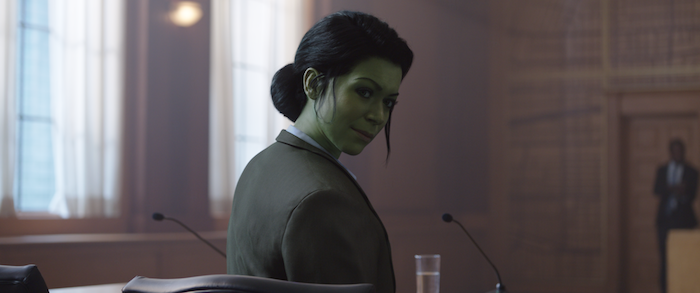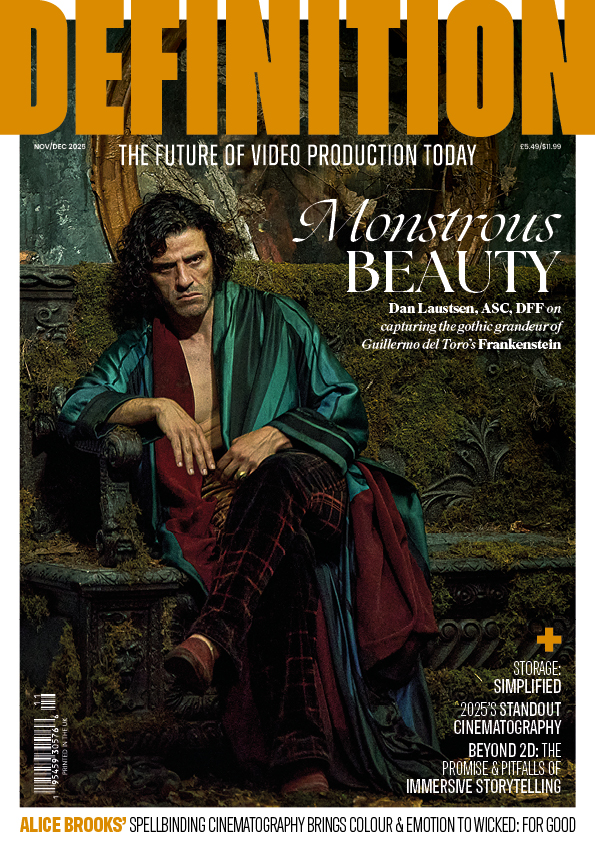
She Hulk: Power of attorney
Posted on Mar 1, 2023
The visual effects supervisor behind She-Hulk: Attorney at Law explains how deepfake and VFX made this Marvel character unique
WORDS Robert Shepherd | IMAGES Marvel Studios
When the very first feature film based on a Marvel comic was released in 1986, there were very high hopes. Howard the Duck (known in Europe as Howard: A New Breed of Hero) had George Lucas, Lea Thompson (Back to the Future), Tim Robbins (The Shawshank Redemption) and a hefty budget to its name.
Upon release, the film was panned by critics and haemorrhaged money at the box office. In 2014, the Los Angeles Times listed the film as one of the costliest box-office flops ever made. However, despite that false start, Marvel Comics, now part of the Walt Disney Company stable, has had more than ten billion-dollar-grossing films to its name.
Late last year, the eighth Marvel Studios television series in the Marvel Cinematic Universe was released on Disney+. It’s about Jennifer Walters, a lawyer who specialises in cases involving superhumans. She also happens to be the green superhero, She-Hulk.

Digital Domain, a VFX and digital production company based in Los Angeles, had already worked on Marvel productions such as Avengers: Infinity War and Endgame, so it made sense for Marvel Studios to call on its services again.
“We wanted to push our VFX technology to the next level, to create a living, breathing, emoting computer-generated character for an episodic,” explains Michael Melchiorre, VFX supervisor at Digital Domain. “It was kind of a natural fit that I would slide over there and help that team push it across the finish line. On-set, we’re there to make sure the performance is captured properly. We’re making sure we get everything we need. The performance, that’s the director’s territory, and we don’t want to step on any feet. But we also want to make sure that while we’re there, we get what we need to bring the character to life once principal photography is over.”
The series benefits from virtual production, too. “Towards the end of the series, She-Hulk goes into an underground secret room hidden in the Marvel offices,” Melchiorre says. “That’s where K.E.V.I.N., the brain who controls Marvel, resides. For that, we did a lot of pre-vis and post-vis using Unreal Engine to help the filmmakers visualise what that environment would ultimately become. It’s helpful every step along the way. You get a better idea of what the environment’s going to look like and how the character’s going to move within it. This gives the director on-set freedom to shoot how they want to shoot and not be hampered by any type of VFX methodology down the line.”
As far as Digital Domain’s sequences are concerned, it was responsible for She-Hulk when she was in her office and the courtroom. Melchiorre explains how the panorama outside the protagonist’s windows was Los Angeles, and that the shots were all filmed with green screen.
“I prefer green screen over blue because it’s easier to light evenly, and for this it worked exceptionally well – because it was a bit brighter and more luminous,” adds Melchiorre.
“So when we’re putting our bright exteriors outside, that all helps blend into the plate photography. Instead of attempting to add extra light around the window frames in comp, we get some of that in-camera, and we can then play into that to help integrate our backgrounds. The GLK&H law firm where She-Hulk works is situated in downtown Los Angeles. We had multiple panoramic 360s, so whenever the script called for it we were able to pull up the correct time of day and correct angle of lighting to match the scene.”
THE BIG CHALLENGE
The entire series was shot during the pandemic, but unlike many other shows, there was no hiatus placed on production.
“As long as the correct protocols were in place and followed, we were able to move on,” explains Melchiorre. “We had iPads on sticks for folk who couldn’t be on set, getting direction like that. Everyone else was masked up, testing constantly. Either because of the pandemic or other reasons, there were situations where an actor couldn’t be there, so there was split screening on occasion.”
The spread of Covid-19 wasn’t the biggest challenge facing Melchiorre and his team. “I’d say it was the volume of work and getting it to the level we needed within the timeframe – and on a slightly reduced episodic budget,” he adds. “On previous films like Avengers, all the work we did for Thanos amounted to about 12 minutes of screen time. For She-Hulk, we were creating 43 minutes of walking, talking, emoting, giggling, drinking, you name it. The range of emotions she had to convey – to me that was the biggest challenge. How do we now take what we learnt on those films and get to the next level – and then some – in this small timeframe, but surpassing what we did with Thanos?”
This story appears in the March 2023 issue of Definition. Read the full article here.








